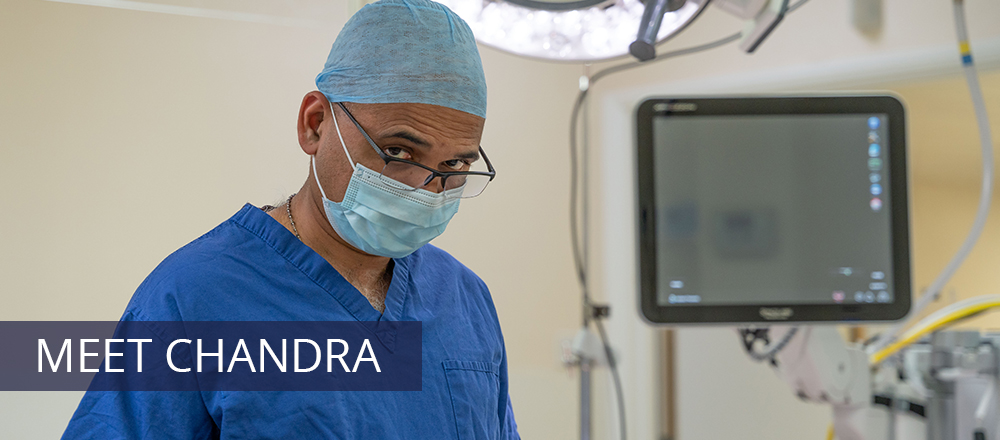Knee replacement surgery (arthroplasty) is a routine operation that involves replacing a damaged, worn or diseased knee with an artificial joint. Adults of any age can be considered for a knee replacement, although most are carried out on people between the ages of 60 and 80. More people are now receiving this operation at a younger age.
A replacement knee usually lasts over 20 years, especially if the new knee is cared for properly and not put under too much strain.
WHEN A KNEE REPLACEMENT IS NEEDED
Knee replacement surgery is usually necessary when the knee joint is worn or damaged to the extent that your mobility is reduced and you experience pain even while resting. The most common reason for knee replacement surgery is osteoarthritis. Other conditions that cause knee damage include:
• rheumatoid arthritis
• haemophilia
• gout
• disorders that cause unusual bone growth (bone dysplasias)
• death of bone in the knee joint following blood supply problems (avascular necrosis)
• knee injury
• knee deformity with pain and loss of cartilage
A knee replacement is major surgery, so is normally only recommended if other treatments, such as physiotherapy or steroid injections, haven’t helped reduce pain or improve mobility.
WHAT DOES THE OPERATION INVOLVE?
You’ll usually be admitted to hospital on the day of your operation. The surgeon and anaesthetist will usually come and see you to discuss what will happen and answer any questions you have. Most people would have seen their surgeon at a pre-assessment clinic and had the chance to the operation.
How the operation is done
Knee replacement surgery is usually performed either under general anaesthetic (you’re asleep throughout the procedure) or under spinal anaesthetic or epidural (you’re awake but have no feeling from the waist down). The worn ends of the bones in your knee joint are removed and replaced with metal and plastic parts (a prosthesis) which have been measured to fit. You may have either a total or a partial knee replacement. This will depend on how damaged your knee is. Total knee replacements are the most common.
In a total knee replacement, both sides of your knee joint are replaced. The procedure takes 1 to 3 hours:
Your surgeon makes a cut down the front of your knee to expose your kneecap. This is then moved to the side so the surgeon can get to the knee joint behind it.
The damaged ends of your thigh bone and shin bone are cut away. The ends are precisely measured and shaped to fit the prosthetic replacement. A dummy joint is positioned to test that the joint is working properly. Adjustments are made, the bone ends are cleaned, and the final prosthesis is fitted.
The end of your thigh bone is replaced by a curved piece of metal, and the end of your shin bone is replaced by a flat metal plate. These are fixed using special bone ‘cement’, or are treated to encourage your bone to fuse with the replacement parts. A plastic spacer is placed between the pieces of metal. This acts like cartilage, reducing friction as your joint moves. The back of the knee cap may also be replaced, depending on the reasons for replacement. The wound is closed with either stitches or clips and a dressing is applied to the wound. In rare cases a splint is used to keep your leg immobile, but you’re usually encouraged to move your knee as early as possible.
You’re likely to still have some difficulty moving after your operation, especially bending your knee. Kneeling may be difficult because of the scar.
If only one side of your knee is damaged, you may be able to have a partial knee replacement. This is a simpler operation, which involves a smaller cut and less bone being removed. It’s suitable for around 1 in 4 people with osteoarthritis.
The advantages of partial knee replacement include a shorter hospital stay and recovery period. Blood transfusions are also rarely needed. This type of joint replacement often results in more natural movement in the knee and you may be able to be more active than after a total knee replacement.
RECOVERING FROM A KNEE REPLACEMENT
You’ll usually be in hospital for three to five days, but recovery times can vary depending on the individual and type of surgery being carried out.
Once you’re able to be discharged, your hospital will give you advice about looking after your knee at home. You’ll need to use a frame or crutches at first and a physiotherapist will teach you exercises to help strengthen your knee.
Most people can stop using walking aids around six weeks after surgery, and start driving after about six weeks.
Full recovery can take up to two years as scar tissue heals and your muscles are restored by exercise. A very small amount of people will continue to experience some pain after two years.
QUICK ENQUIRY
CONTACT INFORMATION
Private Secretary: Jo Evans
joanne.evans66@nhs.net
NHS Secretary: Jo Brindle
jo.brindle@wvt.nhs.uk







